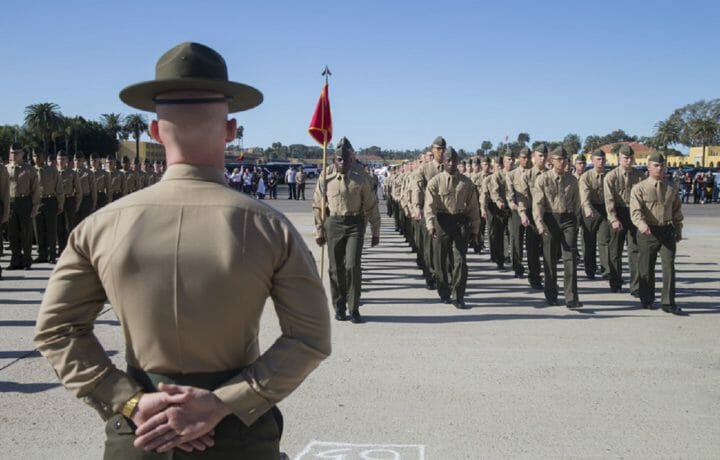Recently, the U.S. Naval Institute published an article suggesting a way the Marine Corps could still exist in part, but not as a separate service. Basically, the article suggested retaining certain elements of the Marine Corps by integrating them into the Army and Navy.
Idea Not New
While this idea may sound radical at best, it is not new. In 1957, Marine BG Victor Krulak – then Assistant Commander, 3rd Marine Division – sent a letter to the then Marine Corps Commandant, General Randolph Pate addressing this very fact. In that letter, BG Krulak said: The United States does not need a Marine Corps. However, for good reasons which completely transcend cold logic, the United States wants a Marine Corps.” Past presidents have also questioned the validity of the Marine Corps.
The Downsizing Has Already Begun
The process to eliminate the Corps as being a separate service branch may have already taken its first step. In March 2020, the Marine Corps Commandant announced the Corps would shrink in size. Under the plan, the units scheduled for deactivation include:
- 3rd Battalion, 8th Marines
- Marine Medium Tiltrotor Squadron 264
- Marine Heavy Helicopter Squadron 462
- Marine Light Attack Helicopter Squadron 469
- Marine Light Attack Helicopter Squadron 367
- Marine Wing Support Groups 27 and 37
- 8th Marine Regiment Headquarters Company.
And the cuts go deeper. When all is said and done, the Corps will have gone from 21 artillery cannon batteries down to five; six amphibious vehicle companies down to four; 24 infantry battalions down to 21.
The Suggested Deconstruct Plan
In the USNI article, it suggests merging certain Marine elements with other service branches – namely the Army and Navy. One move mentioned would be to absorb fixed-wing Corps aviation assets into Navy Aviation; rotary and tilt-rotor wing elements would go to the Army. Deconstructing aviation and support personnel alone would almost halve the number of active-duty members serving in the Marine Corps today.
Without aviation assets, the Marine Corps would be within a few thousand of being the same size as the 18th Airborne Corp (approximately 88,000 strong) and have almost the same capabilities. Both assets are capable of these operations:
- light- infantry
- air-mobile
- airborne
- amphibious assault
Fleet Marine would go to the Army’s new, yet-to-be-created XIX Marine Amphibious Corps. If they made Camp Pendleton, CA its home, it would give both the east and west coast light infantry capability.
The Marine Corps Commandant would reduce in rank down to the same rank as the 18th Airborne Corps Commander – a three-star Lieutenant General.
Keeping Some of the Marine Tradition
Because the Marine Corps has a long and proud heritage, there have been discussions where it would still be possible to keep some of the Marine tradition alive … for a while at least. For example, it would be possible for Marine pilots to still wear their Marine uniform even though they now work for the Navy. For events requiring the dress uniform, Marines (now in the Army) could still wear their distinctive dress blues and retain their revered anchor, eagle, globe emblem. The precedence is already set with the 18th Airborne Corps wearing their maroon berets and cavalry units wearing their cowboy hats and spurs.
And then there is the money-saving aspect to the change. With a slimmer force and chain of command, and another round of BRAC closures as units deactivate or combine, it would reduce the cost to operate the military overall.
And there could be more slimming down in the future. For example, do we need both the 18th Airborne Corps and its almost-identical Marine twin? Merging those two into one and reducing their size through natural attrition over time would be another considerable cost savings.
So between downsizing (the plan of which is already in place) and suggesting certain Marine assets possibly merging with the Navy and Army, the days of the Corps as we know it may be numbered. With the Nation weary from wars on two fronts for the better part of two decades and a smaller number of influential former Marine service members in Congress to preserve the status quo, the time may be right for this to happen. Only time will tell.




